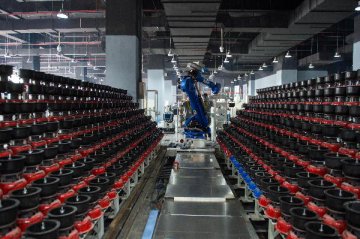A team led by researchers from the University of Science and Technology of China (USTC) demonstrated the hydrothermal method to deposit high-quality antimony selenosulfide thin films, according to the research paper published in the journal Nature Energy.
Antimony selenosulfide is an emerging photoelectric material with advantages including phase stability and low toxicity. With a high absorption coefficient, the film with a thickness of about 500 nanometers can absorb sufficient light irradiation.
By depositing thin films with the hydrothermal method, which is also a simple and low-cost method for thin film preparation, the antimony selenosulfide solar cells broke the benchmark efficiency barrier of 10 percent, said the paper.
Reviewers of the paper said the research sheds new light on the development of the photoelectric material, according to the USTC.




















Latest comments